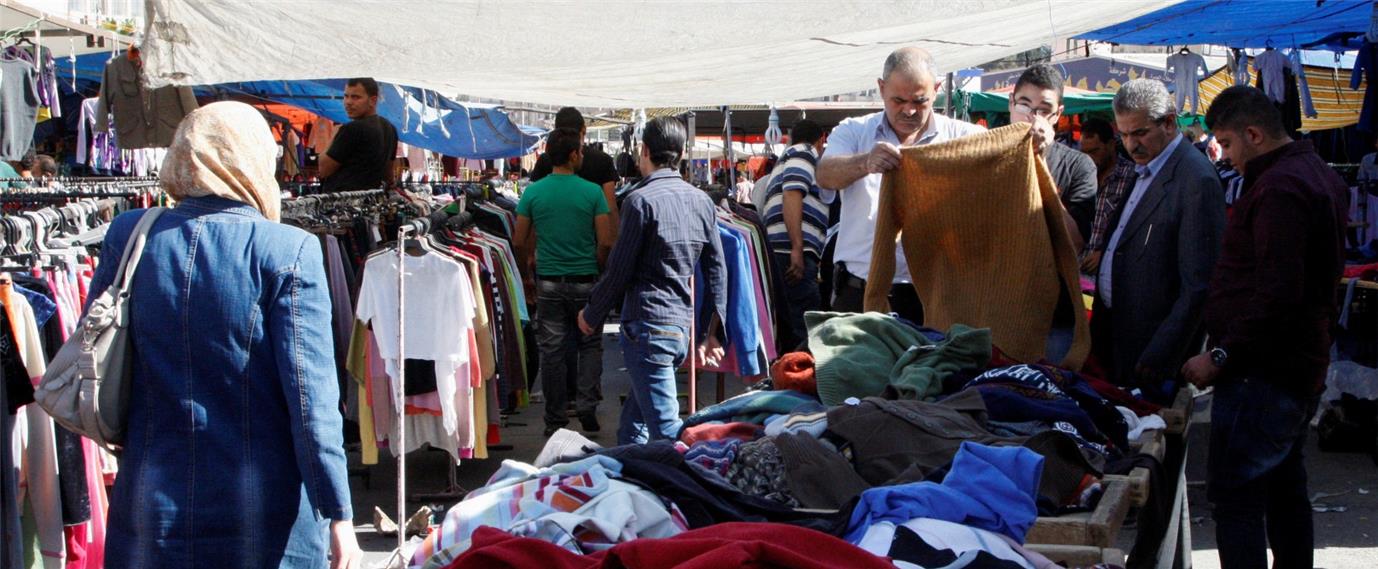عادة ما يقع المراسل أسير حيرته حول الأسلوب الأنجع والطريقة المثلى في معالجة الحكاية لتصل للجمهور على النحو الذي تقتضيه تفاصيلها. فالقصص سهلة السرد باللغة المحكية وبالتفاصيل الكاملة ولكنها صعبة مع محدودية الوقت ومراعاة اللغة العربية السليمة.
ولا تكتمل القصة الخبرية سواء أكانت ذات طبيعة رسمية متسمة بالجمود أو خفيفة تتسم بالمرونة، إلا من خلال توافر العناصر التلفزيونية كالمقابلات والصور الكافية والمضمون الجيد. قد يسهل التحكم بالصور والمقابلات فهي من صناعة الآخرين إلا أن مكمن الصعوبة والحرفية يبرز من خلال النص الذي يروى حكاية التقرير وتطويع هذا النص بسلاسة أفكاره وترابط جمله ليخدم الصور والمقابلات لتشكل العناصر الثلاث لوحة يمكن تفسيرها وفهمها من قبل الجميع.
يتطلب الخروج برواية تلفزيونية عن حدث أو قصة مهارة قوية في الاتصال المباشر بين الصحفي والمتلقي؛ فقد أصبح عالم الاتصال الحديث يوجه رسائله إلى كل مشاهد أو مستمع على حدة، وقبل الخوض في غمار تعبئة بياض الورق بالكلمات، لا بد من فهم عقلية الجمهور وأنماط تقبله للمعلومة أو القصة.
فمن طراز الاستعراض اللغوي المفرط إلى استخدام لغة الشارع تطورت التغطيات الصحفية، ومع الوقت بات الباب مشرعا لكل جديد ولم يعد هناك قاعدة مسلمة في رواية القصة.
واجهتني إحدى القصص في الميدان عن سوق للملابس القديمة المعروفة بـ"البالة".. احترت وقتها في صياغة الكلمات وكيفية الشروع في سرد القصة.. تجولت مرات ومرات في السوق وكنت أدون كل ما يقع على سمعي من كلمات في محاولة لتناول الموضوع بروح تعكس الصورة وتحاكي المكان والزمان.
فكرت في أن أبدأ سرد القصة من كلمات أحد الباعة الذي كان لا يكل ولا يمل من النداء "بيبي بيبي بيبي"، في إشارة منه إلى ملابس الأطفال.. استهواني النداء واستمالتني الطريقة في التسويق للبضاعة فما كان مني إلا ان بدأت في سرد القصة من هذه النقطة.
استهللت التقرير بصوت طبيعي من المكان، وببعض الجمل التسويقية التي كنت قد دوّنتها وأخرى سجّلتها عبر الكاميرا لتكون نقطة انطلاق في شرح تفاصيل حكاية ذلك السوق والخروج بالفكرة عن السياق المعتاد.
ولعل في هذا المثال تأكيد على اختلاف طرق الرواية للقصة الصحفية كل بحسب المكان والزمان والجمهور المتلقي، فكلما توافقت تلك العناصر الثلاث واستطاع الصحفي أن يراعي طبيعتها وخصوصيتها نجح أكثر في إيصال الفكرة.
ومن أبرز التقارير التلفزيونية التي تفرّدت في أسلوب قصّ الحكاية الصحفية، تقرير عن الثورة المصرية إبان الإطاحة بالرئيس المصري المخلوع حسني مبارك بثته قناة الجزيرة.
التقرير الذي تجاوزت مدته الخمس دقائق أشغل الرأي العام والجمهور على مدى أشهر، حيث استخدم معدُّ التقرير أدوات اللغة المختلفة كالاقتباس من آيات القرآن الكريم وأسقطها على الواقع.. شمل التقرير أيضا توظيف الشعر والأمثال وغيرها من الأدوات التي أطفت على الحكاية بعدا جماليا ووقعا أكثر تأثيرا بالمتلقين.
القصة الخبرية الإذاعية
بيد أن الأمر يصبح أكثر صعوبة فيما يتعلق بالتقارير الإذاعية التي تفتقد لعنصر الصورة. حينها يتوجّب على المراسل استغلال ما أوتي من عناصر الصوت الطبيعي ليوصل رسالته.
فخلال التغطيات لإحدى انتخابات البرلمان في إحدى الدول العربية، استغل معد تقرير إذاعي الجدال الدائر بين اثنين من مؤازري مرشَّحين مختلفين ليستهل به التقرير وينقل من خلال الصوت حالة الشارع قبيل الانتخابات.
بعد ذلك وظّف أصوات أبواق السيارات ليبين الازدحام الذي تعيشه المدن خلال فترة التصويت. كما سجل صوتا لمشاجرة حصلت خلال عمليات الاقتراع مدللا من خلالها على سخونة المشهد الانتخابي والاحتقان الذي يعصف بالمقرات الانتخابية. إضافة لتضمين روايته شهادات لبعض المقترعين والقائمين على العملية الانتخابية ليشرحوا أجواء الانتخابات وعمليات الاقتراع.
بعد ذلك انتقل إلى إحدى قاعات الفرز وقد عجت بأصوات عمليات جمع أصوات الناخبين وتقسيماتها لينتهي التقرير بإعلان أسماء الفائزين والصخب الذي رافق إعلان النتائج بين فرح بفوز مرشح وخيبة لهزيمة آخر.
استطاع الصوت الطبيعي المرافق للأحداث الذي استغله معد التقرير في نقل المستمع من مكان إلى آخر وعكس الأجواء للمتلقي بكل ما حملته من تفاصيل مستعينا بخيال الجمهور الذي يشتعل مع كل مقتطف صوتي ويرسم صورة للمكان والزمان.
الكلمة أساس الحكاية
وفي أحيان أخرى يكون للكلمة الدور الأساسي في قص الحكاية فتسعف الكاتب في توصيف المكان والزمان والأصوات وتسلسل الأحداث إذا شكّل الكاتب جملا واضحة ومفهومة ومترابطة تنقل القارئ لأجواء القصة.
أحد أهم الطرق في سرد القصة الصحفية هي تلك التي تبدأ بكمية كبيرة من الوصف قد يصل حد الإغراق قبل نقل القصة الخبرية، كالاستعانة بتفاصيل لا علاقة لها في لب الموضوع (الحدث)، بل لها علاقة بالأشخاص والأشياء المتواجدة في مكان الحدث.
في حادث تفجير إحدى الحافلات في العراق إبان الغزو الأميركي لبغداد، كتب أحد الصحفيين تقريرا يصف ما حدث.. وجاءت بداية التقرير على ذكر لون الحافلة ومكان وقوفها والكتابات التي سطرت على جوانبها وعلى بقايا زجاجها الخلفي من قبيل "تمهل باص مدرسة" و" يوجد أطفال في الحافلة"، ذكر هذه التفاصيل ربما يجيب عن بعض التساؤلات حول استهداف الحافلة أو ربما عن بشاعة الفعل الذي حل بركابها.
وأمام تلك الحافلة برع الكاتب في وصف طفل كانت هذه الحافلة تقله إلى مدرسته كل صباح مع ذكر تفاصيل ملابس وشكل الطفل الذي ارتسم على وجهه الأسى وعلامات الاستفهام عن مصيره فيما لو كان أحد ركاب الحافلة لحظة انفجارها، وعن مصير زملائه وسائق الحافلة الذي كان يعرفه الطفل حق المعرفة.
الانغماس بالتفاصيل منح بعدا إنسانيا للحكاية بعيدا عن عدد الضحايا وتداعيات التفجير الرسمية التي تصدر عن المؤسسات الأمنية والحكومية. وعاش معها القارئ تجربة التقمص الوجداني لواقع الأشخاص الذين يتواجدون في أماكن التفحيرات لحظة وقوعها.







































